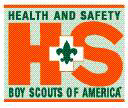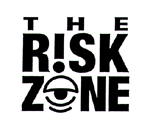|


SCOUTING SAFELY
The Boy Scouts of America has nearly a century of experience conducting high-adventure outdoor
activities in a manner that is safe for all participants. The following resources and information are provided to enable adult
leaders and youth to help us maintain our impeccable safety record.

Health & Safety AlertsWest Nile Virus - To help protect Scouts, Scouters, and camp staff against the threat of West Nile Virus,
the BSA advocates a two-pronged program directed at mosquito reduction and personal protection.
Severe Acute Respiratory Syndrome (SARS) - The Health and Safety Committee of the Boy Scouts of America recommends that Scouts and
Scouters avoid taking elective or nonessential travel to SARS-affected countries or hosting Scouts or leaders in the United
States who come from SARS-affected countries.
Guidelines For Using Cannons - The BSA has developed guidelines to be met in holding any council or district event in
which a cannon or other large bore artillery device will be used. Units are not authorized, under any circumstances, to use
a cannon or any other large bore artillery device.
Avian/Bird Flu Pandemic - The risk from avian influenza is generally low to most people, because the viruses do
not usually infect humans. H5N1 is one of the few avian influenza viruses to have crossed the species barrier to infect humans,
and it is the most deadly of those that have crossed the barrier.
Take a Bite Out of Cyber Crime - The National Crime Prevention Council (NCPC) today announces a new "Take a Bite Out of
Cyber Crime" public awareness campaign (www.bytecrime.org) funded by a coalition of private sector partners. Featuring its
popular McGruff the Crime Dog character, the campaign will help empower and rally millions of computer and digital device
users in the battle against the continually growing plague of computer viruses, worms, spam, spyware, phishing, identity theft
and online predators.
Water Chugging - The practice of water chugging is dangerous. Efforts should be taken to discourage such
contests.

General Resources
- Managing Risk - (from the Fieldbook) The best way to stay
safe in the outdoors is to avoid getting into trouble in the first place. That requires planning, training, leadership, good
judgment, and accepting responsibility—in short, risk management.
-
-
-
-
-
-
-
-
-
-
-
- Appropriate Guidelines for Scouting Activities - This chart provides an at-a-glance reference to
activity guidelines that are based on the mental, physical, emotional, and social maturity of youth members.
-
-
-
-
-
-
-
-
-
-
-
- Guide to Safe Scouting - The Guide to Safe Scouting is the unit leaders'
guide to current policies and procedures.
-
-
-
-
-
-
-
-
-
-
-
- The Sweet 16 of BSA Safety - As an aid in the continuing effort to protect participants
in Scout activity, the BSA National Health & Safety Committee have developed 16 points that embody good judgement and
common sense for all activities.
-
-
-
-
-
-
-
-
-
-
-
- The Driver's Pledge - This pledge outlines five key points that a driver
should attend in order to safely convey Scouts of their outings.
-
-
-
-
-
-
-
-
-
-
-
- Risk Management Newsletter - The Risk Management Newsletter provides timely
news about current issues and recent updates to our policies and procedures.
-
-
-
-
-
-
-
-
-
-
-
- Safe Swim Defense - The Safe Swim Defense is a plan for conducting
swimming activities in a safe manner.
-
-
-
-
-
-
-
-
-
-
-
- Safety Afloat - Safety Afloat has been developed to promote boating
and boating safety and to set standards for safe unit activity afloat.
Climb On Safely - Climbing on Safely is designed to provide BSA's recommended procedures for organizing
and conducting a unit climbing and rappelling activity.
- Policy on Use of Chemical Fuels - This policy is intended to encourage safe practices
when using chemical fuels - liquid, gel, and gas.
-
-
-
-
-
-
-
-
-
-
-
- Emergency Preparedness Award - Working with the United States Department of Homeland
Security, the Boy Scouts of America has developed an award program to help Scouts to be prepared for emergencies of all kinds.
-
-
-
-
-
-
-
-
-
-
-
- BSA Bike Safety Guidelines - This set of guidelines and procedures provides
guidance for the use of bicycles in program activities on every level of the organization.
-
-
-
-
-
-
-
-
-
-
-
- The Latest First Aid for Wounds and CPR - In response to recent concerns over bloodborne
ailments, the BSA has consulted with the Center for Disease Control and Prevention and American Red Cross to update our guidlines
for wound treatment and CPR.
Scouter's Guide to Severe Weather & Other Hazards - This set of guidelines and procedures provides guidance to help and aid your unit when it comes
to severe weather and other hazards while on a unit activity.
Trek Safely - Trek Safely is designed
to help units plan and carry out a safe trekking experience for their members.
Click Here for more information Trek Safely...

Training
- Planning and Conducting a Safe Scout Outing - Safe Scouting can happen if you follow the Scout
motto: Be Prepared. This unit of supplementary training will describe how to plan for and conduct a safe Scout outing.
-
-
-
- Youth Protection Training - An online course that guides adults in creating
the most secure environment possible for our youth members.
-
-
-
- Safe Swim Defense - The Safe Swim Defense is a plan for conducting
swimming activities in a safe manner.
-
-
-
- Safety Afloat - Safety Afloat has been developed to promote boating
and boating safety and to set standards for safe unit activity afloat.
-
-
-
- Camp Health Officer Training - (Powerpoint) This powerpoint presentation provides
requisite information for camp health officers.
-
-
-
- Health and Safety/Risk Management Conference - Philmont Training Center will conduct a conference
on Health and Safety and Risk management.

|

